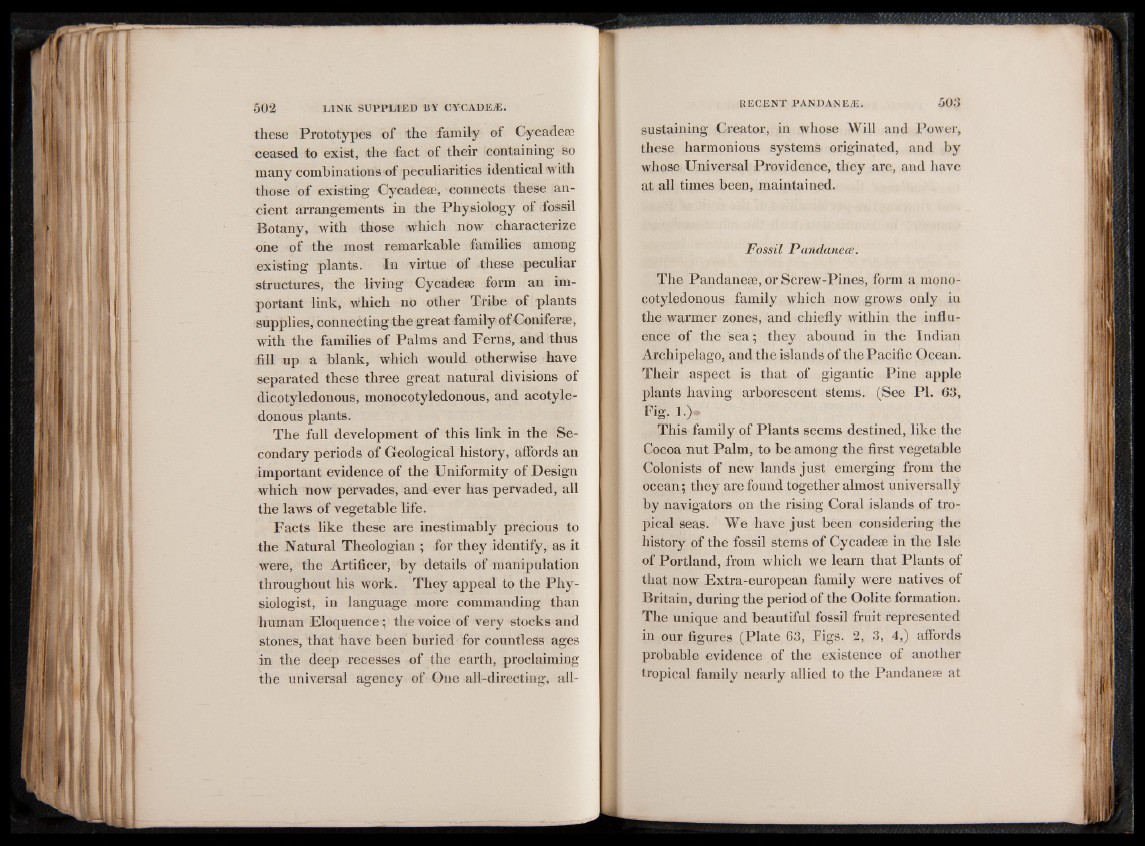
these Prototypes of the family of Cycadese
ceased to exist, the fact of their containing so
many combinations of peculiarities identical with
those of existing Cycadese, connects these ancient
arrangements in the Physiology of fossil
Botany, with those which now characterize
one of the most remarkable families among
existing plants. In virtue of these peculiar
structures, the living Cycadese form an important
link, which no other Tribe of plants
supplies, connecting the great family of Conifer se,
with the families of Palms and Ferns, and thus
fill up a blank, which would otherwise have
separated these three great natural divisions of
dicotyledonous, monocotyledonous, and acotyle-
donous plants.
The full development of this link in the Secondary
periods of Geological history, affords an
important evidence of the Uniformity of Design
which now pervades, and ever has pervaded, all
the laws of vegetable life.
Facts like these are inestimably precious to
the Natural Theologian ; for they identify, as it
were, the Artificer, by details of manipulation
throughout his work. They appeal to the Physiologist,
in language more commanding than
human Eloquence; the voice of very stocks and
stones, that have been buried-for countless ages
in the deep recesses of the earth, proclaiming
the universal agency of One all-directing, allsustaining
Creator, in whose Will and Power,
these harmonious systems originated, and by
whose Universal Providence, they are, and have
at all times been, maintained.
Fossil Pandanece.
The Pandanese, or Screw-Pines, form a monocotyledonous
family which now grows only in
the warmer zones, and chiefly within the influence
of the sea; they abound in the Indian
Archipelago, and the islands of the Pacific Ocean.
Their aspect is that of gigantic Pine apple
plants having arborescent stems. (See PI. 63,
Fig. l|&
This family of Plants seems destined, like the
Cocoa nut Palm, to be among the first vegetable
Colonists of new lands just emerging from the
ocean; they are found together almost universally
by navigators on the rising Coral islands of tropical
seas. We have just been considering the
history of the fossil stems of Cycadeee in the Isle
of Portland, from which we learn that Plants of
that now Extra-european family were natives of
Britain, during the period of the Oolite formation.
The unique and beautiful fossil fruit represented
in our figures (Plate 63, Figs. 2, 3, 4,) affords
probable evidence of the existence of another
tropical family nearly allied to the Pandanese at